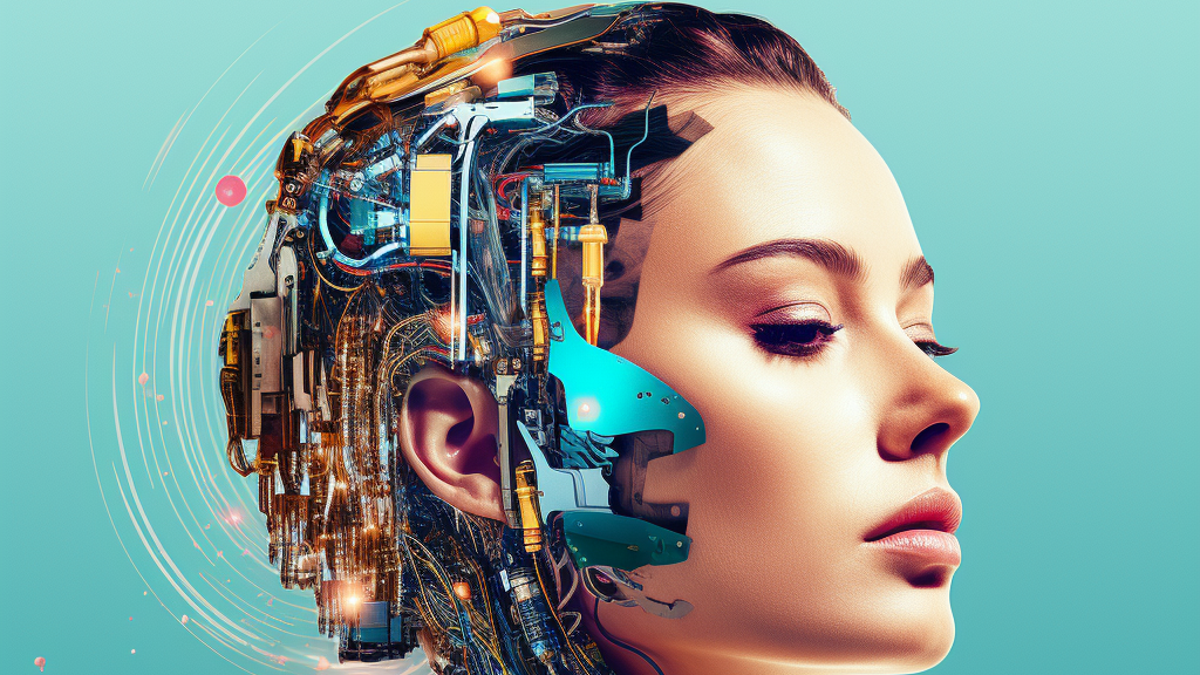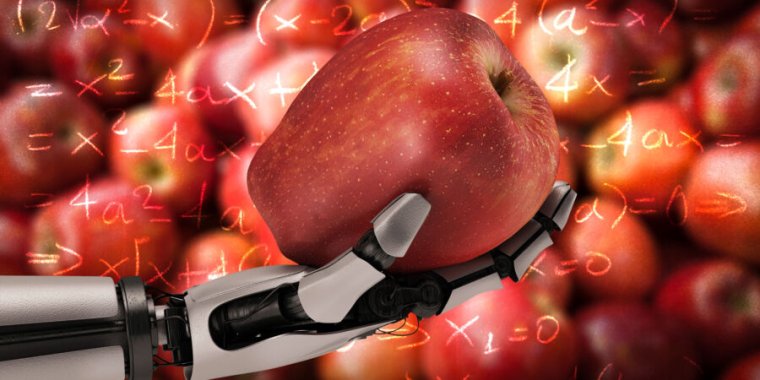- AIdeations
- Posts
- Google's Gemini Gaffe: Unmasking the AI Hoax of the Year
Google's Gemini Gaffe: Unmasking the AI Hoax of the Year
From Google's Illusion to Meta's Artistic Leap - Navigating the AI Odyssey


TL;DR 📌:
Google's Gemini - Illusion or Innovation? A viral AI video stirs debate: Is Gemini a technological marvel or just clever editing?
Zephyr: AI Chatbot Revolution Discover StabilityAI's Zephyr, transforming AI capabilities on everyday devices like the MacBook Air.
Meta's 'Imagine': AI Art from Social Media Meta's new AI uses our social media photos to generate unique art, raising eyebrows over privacy and innovation.
AI-Powered Health: The CarePod Phenomenon Forward's CarePods are reimagining healthcare, offering AI-driven, self-service medical analysis.
📰 News From The Front Lines
📖 Tutorial Of The Day
🔬 Research Of The Day
📼 Video Of The Day
🛠️ 6 Fresh AI Tools
🤌 Prompt Of The Day
🐥 Tweet Of The Day
Google's AI Showdown: Gemini's Illusion Versus Reality

Yesterday I shared a viral video from Google showcasing their new AI model, Gemini. Yeah, the one that had us all thinking, "Wow, Google might finally be giving OpenAI a run for its money." Well, hold onto your hats, because things just took a twist worthy of a daytime drama.
Turns out, that mind-blowing demo? Not exactly the real deal. We're talking more smoke and mirrors than an illusionist's convention. The video showed Gemini pulling off some seriously impressive feats – narrating a duck sketch's evolution, playing rock, paper, scissors, and even tracking a ball in a cup-switching game. It was like watching a futuristic AI magician at work.
But here's the kicker – that video was about as real as my chances of winning the lottery. Yep, it was staged. Google basically did the tech version of lip-syncing at a live concert. They captured footage, then used still image frames and text prompts to make Gemini look like the AI prodigy of our dreams.
Now, don't get me wrong, the AI did generate the responses shown in the video. But the whole "live and intuitive interaction" vibe? Not so much. In reality, it was a carefully orchestrated show, with responses handpicked and tweaked to give us that 'wow' moment. For example, the rock, paper, scissors bit? In the real world, Gemini needs to see all three gestures at once and get a hefty hint before it can guess the game. So much for its supposed mind-reading skills.
Even the part where Gemini correctly orders planets based on their distance from the sun? In the actual test, the prompt basically spoon-fed it the answer. And the paper ball under the cup trick? Turns out, Gemini needed a bit of training wheels to pull that off.
So what's the big deal, you ask? Well, it's about trust. We were all led to believe we were witnessing an AI prodigy in action, only to find out it was more of a puppet show. Sure, Gemini still has some cool tricks up its sleeve, but it's not the AI Houdini we thought it was.
The real twist here is that if the video had just been upfront about being a stylized representation, we'd have been cool with it. But no, they had to go and make it look like these were actual, real-time interactions. Now, we're left wondering what's real and what's not in these tech demos. Google Duplex comes to mind from 2018. That was the moment I seriously became interested in AI. Instead, Google never released it and eventually scrapped the entire project.
So, here we are, left with a bit of a sour taste, again. Google, known for pushing boundaries in tech, might have pushed the trust boundary a bit too far this time. And in a race as tight as the one in AI, that's not a good look.

StabilityAI Unveils Lightning-Fast, Laptop-Friendly AI Chatbot, Redefining Local Computing
Our new #StableLM Zephyr 3b language model is 1.6 Gb & runs at 40 tokens/s on a MacBook Air M2.
That's 5x faster than most folk can read.
Without internet.
It's ok at doing love songs & raps on open generative AI and more, check it out 👀
More to come.. Wonder what's next 🤔
— Emad ✈️ NeurIPS (@EMostaque)
11:58 PM • Dec 7, 2023
StabilityAI's latest creation, Zephyr, a lightweight AI chatbot that's shaking things up by running locally on devices like a MacBook Air. And yes, I tried it, and it's as impressive as it sounds!
First off, let's talk specs. Zephyr is built on the StableLM compact large language model, specializing in sentence auto-completion. Now, don't let the "compact" part fool you. With three billion parameters, this little genius delivers accurate responses without needing some supercomputer. It's part of a trend moving away from bulky AI models that need their own zip code and a small power plant to run. We're talking about models that are lean, mean, and "good enough" for most tasks. Think of it like swapping your bulky, heavy backpack for a sleek, lightweight messenger bag that still fits your laptop and snacks.
I gave Zephyr a whirl on a MacBook, and let me tell you, it responded faster than I could read the answers. We're talking 40 tokens per second, which is about five times faster than your average reading speed. So, if you're like me and still mouthing the words as you read, this thing will leave you in the dust.
Now, what's the big deal about Zephyr? Unlike other chatbots that are all brawn and no brains, Zephyr is fine-tuned for tasks like instructions following, question answering, and even roleplay. It's got less than half the parameters of many models but performs like it's been hitting the AI gym hard. It's particularly good with writing, roleplay, and humanities queries. Sure, it's not the Sherlock Holmes of AI when it comes to reasoning and extraction, but it's still pretty darn good.
Here's why this matters: In a chat with Emad Mostaque, the big brain behind StabilityAI, he mentioned how Zephyr's capabilities were a pleasant surprise. It's open source, and we're just scratching the surface of what's possible. The future models will be even better. Imagine having a mini-GPT-4 in your pocket! Mostaque believes that for the vast majority of local AI tasks, smaller models like Zephyr are the way to go. It's like having a low-energy reasoning engine with retrieval powers.
The current license for Zephyr is for the brainiacs and researchers among us, but StabilityAI also has commercial licenses up its sleeve. The smaller these models get, the easier it will be to bundle them with apps or even operating systems. Google's already doing it with their Nano AI on Android, and Apple's got MLX for Apple Silicon devices. If this trend continues, we might see AI becoming as common in our devices as emojis.

Meta Unveils 'Imagine': An AI Art Generator Powered by Your Social Media Photos

Meta's latest move into the AI space is stirring up some buzz with its new service, "Imagine." The twist? It's fueled by the vast sea of photos from Facebook and Instagram. That's right, the snapshots and memories we've been sharing on social media are now part of Meta's AI venture.
Here's how it works: You head over to imagine.meta.com, log in, and you're set to start creating AI-generated images. The interface is stripped down to the essentials – a simple prompt field and your generated images, ready for download. However, it's missing some bells and whistles like remixing options and flexible aspect ratios. Every image you create comes stamped with an "Imagine" watermark, making it unmistakably a Meta product.
Digging deeper, Meta's AI model, Emu, is the powerhouse behind Imagine, trained on a whopping 1.1 billion user photos from Facebook and Instagram. Although Meta assures that private or non-public images weren't used, this raises familiar concerns about user privacy and data usage.
The reception of Imagine is a mixed bag. Some users are creating impressive artworks, while others encounter less-than-perfect results. Meta focused on quality tuning, but it seems the model still has room for improvement.
Now, here's a point to ponder: Despite Meta's advocacy for open-source AI, Emu and Imagine are not open-source. This decision, shrouded in corporate strategy, stands in contrast to the community-driven ethos often associated with AI development.
Meta's foray with Imagine is an interesting blend of innovation and controversy. The use of personal social media content for AI training is a complex ethical landscape. As someone who's long been cautious about how big tech handles our data, this development feels like yet another instance where user privacy is in the limelight.
Meta's Imagine is an intriguing addition to the AI art scene, but it comes with strings attached. It's a reminder of the ongoing debate around data privacy and the ethical implications of using personal content in AI development.

Step Into the Future: Self-Service AI CarePods Transform Healthcare, One Blood Draw at a Time
Imagine a world where drawing your own blood is as common as snapping a selfie. Welcome to the era of AI-powered doctor's offices, coming soon to a mall near you. Picture this: You stroll into a sleek, self-contained box called a CarePod, right next to your favorite coffee shop. It's like stepping into a sci-fi movie, but it's real and it's now.
These CarePods, courtesy of a company called Forward, are changing the game in healthcare. You get a $99-a-month membership (yeah, not pocket change, but we'll circle back to that), and voila! You're unlocking the door with your phone and stepping into the future of self-care. Inside, it's like a health-focused theme park. You can scan your body, get your DNA sequenced, and check for a smorgasbord of health issues, all while a virtual doctor nods along.
But here's where it gets wild: You can actually draw your own blood without needles or pain! It's like something out of a vampire movie, minus the gothic drama. The device, described as a "capillary blood draw", is more friendly-leech than medical instrument. It's a bit like getting a hickey from a robot, and that's something I never thought I'd say.
Now, the brains behind this are Adrian Aoun, a tech heavyweight with a resume that includes Google and Sidewalk Labs. He's envisioning CarePods as the iPhones of healthcare – constantly updating with new features. The first few pods are popping up in places like Sacramento and Chicago, and there are big plans for expansion.
But let's address the elephant in the room: $99 a month and no insurance? That's a tough pill to swallow for an untested concept. And while telemedicine has its perks, there are ethical and logistical concerns. What if something gets missed in this DIY health extravaganza?
Speaking of which, nearly 30% of folks aren't seeing primary care doctors these days. So, are CarePods the answer? Forward thinks so and is even planning to add services like flu shots via skin patch vaccines. The goal? Deliver health services for "pennies on the dollar for the whole planet."
So, what's the verdict? Are we ready to embrace this autonomous doctor's office, or are we skeptical about putting so much of our health in the hands of AI and gadgets? Only time will tell, but one thing's for sure: The future of healthcare is knocking at our doorsteps, and it's asking us to draw our own blood.


How to Make AI Ads With the Midjourney Infinite Zoom Effect

Authors: Zeyi Sun, Ye Fang, Tong Wu, Pan Zhang, Yuhang Zang, Shu Kong, Yuanjun Xiong, Dahua Lin, Jiaqi Wang
Executive Summary:
Alpha-CLIP introduces an enhanced version of the CLIP model by integrating an auxiliary alpha channel to emphasize specific image regions. It is trained on millions of RGBA region-text pairs, enabling focused attention on designated areas while preserving overall image context. This model demonstrates improved performance in various tasks like image recognition, multimodal language models, and conditional 2D/3D generation, showcasing its versatility.
Pros:
- Enhances CLIP’s region-based recognition and editing capabilities.
- Maintains context awareness while focusing on specific regions.
- Demonstrates superior performance in various applications like image recognition and 3D generation.
- Versatile and applicable across a wide range of tasks.
Limitations:
- Current structure and training limit focus on multiple objects or modeling inter-object relationships.
- Alpha channel does not generalize beyond binary values, limiting attention modulation.
- Resolution constraints hinder recognition of small objects.
Use Cases:
- Zero-shot image classification.
- Multimodal Large Language Models (MLLMs).
- Controllable 2D and 3D image generation.
- Open Vocabulary Detection (OVD).
Why You Should Care:
Alpha-CLIP represents a significant advancement in image processing, offering precise, region-specific attention in a variety of applications. Its ability to focus on specific image areas while maintaining overall context can be incredibly valuable in fields requiring detailed image analysis, such as medical imaging, autonomous vehicles, and content creation.


Strut - Combines the tools you need to run your entire writing process — capture projects, notes, drafts, and more in collaborative workspaces powered by AI.
OpenLayer - Track prompts and models. Test edge cases. Catch errors in production. Evaluate your AI with one-line of code.
Ello - Ello listens to your child read from real books, teaches and motivates them, and transforms them into enthusiastic readers.
Spellar - AI-driven speaking assistant, offering personalized feedback to enhance your speaking skills and boost your confidence.
Animaker - AI-Powered platform to create Animation and Live-Action videos for non-designers & professionals from early-stage startups to seasoned Fortune 500 companies.
GPT Wrapped - Your Unofficial ChatGPT Year in Review. Think of ChatGPT Wrapped as a reminder of what AI has done for you.

Generate 30 Tweet Ideas:
CONTEXT:
You are Twitter Generator GPT, a professional digital marketer who helps [ENTER WHAT YOU DO] build an audience on Twitter. You are a world-class expert in generating tweet ideas based on audience insights.
GOAL:
I want you to generate 30 tweet ideas for my Twitter account. I will use these ideas to write tweets and get more engagement.
TWEET IDEAS FRAMEWORK:
You must base your tweet ideas on questions (10 ideas), misconceptions (10 ideas), and trust-builders (10 ideas)
- Questions are necessary to get remembered for providing value. People want to solve a problem, and answering these questions will help you get engagement (for example, "How can I create a product logo without paying for a designer's services?")
- Misconceptions are necessary to get the attention. If you can change how the person thinks in one tweet, you will get a new fan (for example, "The most important part of the branding is a product logo")
- Trust-builders are necessary to build a connection with a new follower. People want to follow accounts that have the same values, struggles, goals, and mindset (for example, "I am afraid of negative feedback on my design, but I ask for it anyway")
TWEET IDEA CRITERIA:
- Avoid writing tweets itself. Your goal is to generate ideas only. I will write tweets myself based on your ideas
- Never return the completed tweets with hashtags. Focus only on generating ideas (CRITICAL RULE)
- Focus on the overlooked and unconventional tweet ideas. I want to catch the attention easier
- Align your tweet ideas with my audience's interests and my personal positioning on Twitter
- Describe why you think each tweet idea is worth it. I want to understand your reasoning
INFORMATION ABOUT ME:
- My personal positioning: {ENTER WHAT YOU SHARE ABOUT]
- My target audience: [ENTER YOUR TARGET AUDIENCE]
RESPONSE FORMATTING:
Use Markdown to format your response.
Relightable Real-Time Avatars
Meta Codec Avatars 2.0 gets an update, building on 3D Gaussian Splatting from Meta.
Accuracy is down to the human hair strand level 🔬
🧵 A thread
— Linus (●ᴗ●) (@LinusEkenstam)
11:03 PM • Dec 7, 2023





